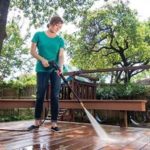
(BPT) – Spring and summer have a reputation for being allergy seasons, but actually two-thirds of allergy sufferers experience symptoms year-round, according to a study conducted by Isobar. Airborne allergens don’t disappear when the weather cools, windows close and everyone heads indoors.
Actually, throughout “closed-window season,” the lack of ventilation can cause irritants like dust, pet dander, and mold spores to linger and build up inside homes and offices, causing allergen-related discomfort to flare up. Volatile organic compounds (VOCs) can also build up when fresh air is not circulating and can result in airway irritation as well as other discomforts.
Although it may not be top of mind, pollen should not be overlooked during the winter months, either. In some areas of the country with warmer climates, pollens can be a constant concern with plants blooming throughout the year. In cooler climate areas, temperature fluctuations can also cause pollen to be present when you least expect it.
“Many people automatically reach for an over-the-counter antihistamine when they experience allergy symptoms due to indoor or outdoor allergens,” says Dr. Bob Geng, a board-certified allergist/immunologist and medical advisor for Honeywell Air Purifiers. “However, by first evaluating your home environment and taking steps to remove or minimize allergens and allergen sources, you can reduce your exposure naturally and may be able to limit the need for medication or allergy shots.”
Reducing indoor allergens
Indoors, irritants can come from numerous sources. Take these steps to reduce allergens and irritants inside your home this winter — and all year long:
1. Dust and other airborne particles can cling to window treatments, upholstery, throw pillows and other soft items that don’t get vacuumed regularly. Help minimize dust by reducing excessive amounts of fabrics in your home.
2. Wash sheets, pillow covers and mattress covers weekly in hot water of at least 130 degrees Fahrenheit. Frequent laundering in hot water can reduce the presence of dust and dust mite waste.
3. Vacuum carpets at least weekly using a vacuum cleaner with a HEPA filter to remove allergens that can settle deep into the fibers. Vacuuming can stir up, or aerosolize particles, so try to have a non-allergy sufferer do the vacuuming, or wear a disposable dust mask. Run an air purifier to supplement weekly vacuuming and to help capture airborne particles before they settle on surfaces.
4. Three in 10 allergy sufferers have allergic reactions to dogs and cats, according to the Asthma & Allergy Foundation of America (AAFA). Detectable levels of pet dander are present in nearly every U.S. home, even those without pets, as these allergens can easily be carried into the home on clothing and shoes. While this dander can be found in the home all year long, levels may be higher in colder months due to closed windows and less ventilation. If you do have pets, their fur, dander and dried saliva can all become airborne and be inhaled. Limit your pet’s access to bedrooms, and keep them off upholstered furniture. Reduce activities like jumping on a couch or running around a room, which can stir up pet allergens and cause them to become airborne.
5. Common household items including soaps, detergents, perfumes, cleaning supplies and building materials like paint and varnishes can emit gases in the form of volatile organic compounds (VOCs). For many, especially for allergy and asthma sufferers with airways that are typically already inflamed, exposure to VOCs can cause nasal passage, lung and throat irritation. The EPA reports that VOC levels inside homes are two to five times higher than levels outdoors. Check product labels and be aware of the various scents, chemicals and cleaners you use. Honeywell True HEPA air purifiers include activated carbon pre-filters that help trap odors and VOCs.
6. Consider using an air purifier to further remove allergens from the air. Honeywell True HEPA Air Purifiers capture up to 99.97 percent of microscopic airborne particles that pass through the filters, including airborne grass, weed and tree pollens, dust, smoke, pet fur/dander, mold spores, and certain bacteria and virus. Honeywell True HEPA Air Purifiers also help reduce VOCs and odors with activated carbon pre-filters. The Honeywell Bluetooth(R) Smart HEPA Air Purifier has a VOC sensor that detects when VOCs are present and can automatically adjust its operating mode to quickly capture and reduce VOCs. This model offers many other features with its free App, including custom scheduling, outdoor allergen alerts and a proximity sensor that make it easier to improve your indoor air quality.
To learn more about air purifiers, visit honeywellpluggedin.com. For more information on allergies and allergens, visit the Asthma & Allergy Foundation of America website, aafa.org.






